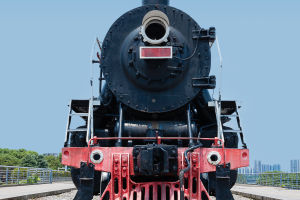The history of paper cranes can be traced back to origami, the traditional art of paper folding in Japan. Origami originated in China and gradually developed into a unique art form after being introduced to Japan.
In Japan, origami is widely used in some ceremonies, celebrations, decorations, and entertainment. Making paper cranes requires paper to be folded into a series of creases and angles, finally forming a three-dimensional image of a crane.
Usually, paper cranes are made of square paper, which can be traditional and pure white origami paper, or paper of any color and pattern to suit different creative needs.
Every year, tens of thousands of people visit the Peace Memorial Park in Hiroshima and place their folded origami cranes next to the Atomic Bomb Dome to express their wishes and pay tribute to those affected by the atomic bombing. The history of origami in Japan has a much longer heritage, although there are no exact historical records about the origin and spread of the thousand paper cranes.
Paper cranes have special significance in Japan, where they are associated with good wishes such as peace, health, and wish fulfillment.
The traditional origin of paper cranes can be traced back to the legendary thousand cranes, according to Japanese tradition, whoever folds a thousand paper cranes will get a wish fulfilled.
Regardless, origami cranes, as a unique form of origami, have taken root in Japanese culture and continued to evolve over the years.
In Japanese culture, paper cranes hold special symbolic meanings. Here are some of the meanings associated with the thousand paper cranes in Japan:
1. Prayer and Hope: Folding a thousand origami cranes stems from a traditional belief that doing so can make wishes come true. Therefore, the thousand paper cranes are seen as symbols of prayer and hope.
When folding the thousand origami cranes, people often contemplate their wishes, hoping that they will come true upon completing the task.
2. Health and Longevity: Cranes are considered auspicious symbols in traditional Japanese culture, representing longevity and good health. Consequently, the thousand paper cranes are also seen as symbols that bring about health and longevity.
People fold thousands of origami cranes for themselves or others, praying for good health and long life.
3. Peace and Happiness: Paper cranes also symbolize peace and happiness. In Japanese history, origami cranes became associated with events commemorating the atomic bombing of Hiroshima. The story of Sadako Sasaki spread widely, and paper cranes became a symbol of peace.
4. Blessings and Friendship: Folded origami cranes are often given as gifts to relatives and friends, expressing blessings and friendship. The thousand paper cranes represent well wishes and sincere affection, making them a popular gift.
Paper cranes in Japan symbolize prayer, hope, health, longevity, peace, happiness, and friendship. They hold great significance in Japanese culture and serve as a means for people to convey their affection and wishes on special occasions.
Today, origami cranes have become a common handicraft and decoration, popular not only in Japan but all over the world.
People make origami cranes to express blessings, celebrate special occasions, or commemorate important events. Whether it is an individual creation or a collective art project, thousand paper cranes represent good wishes and hopes.


